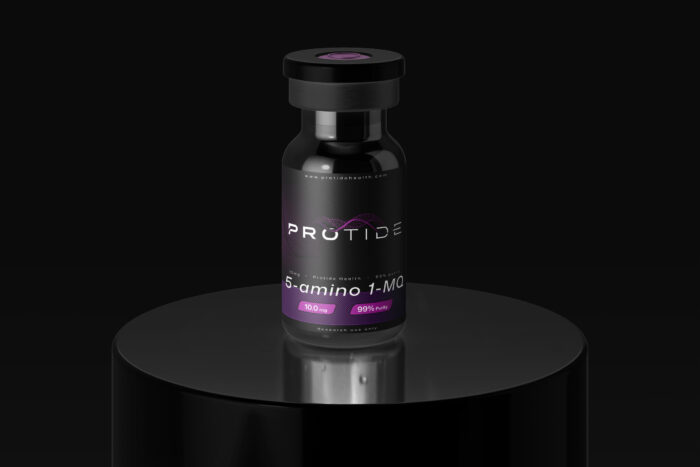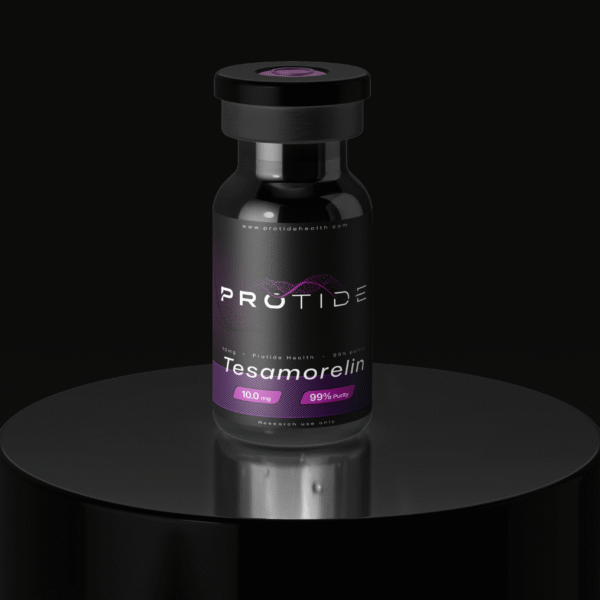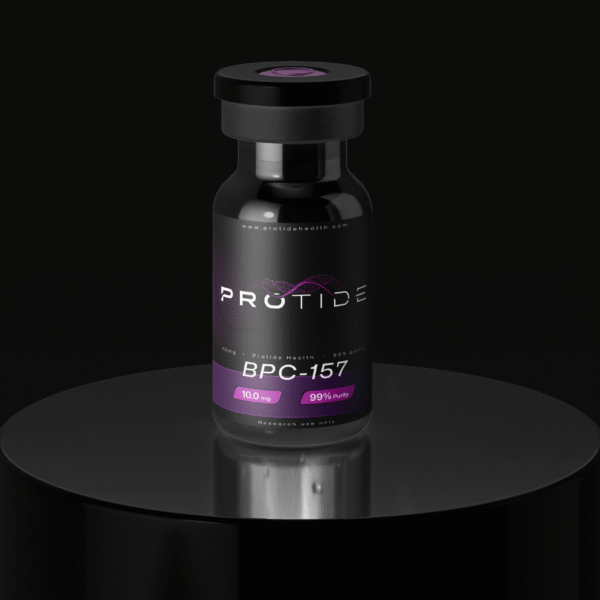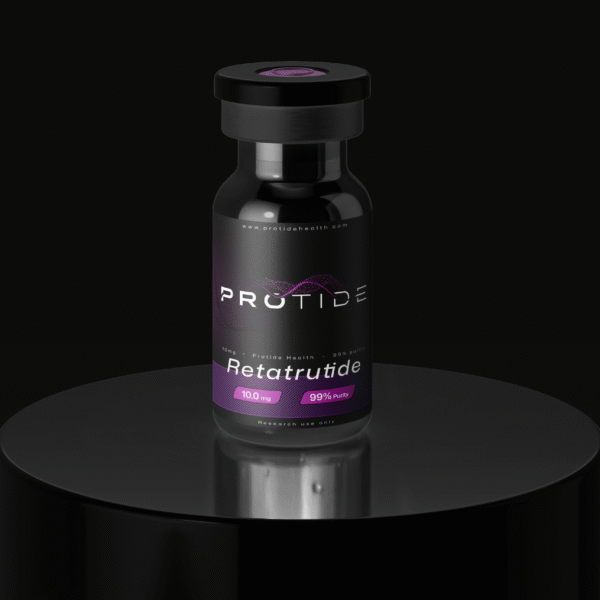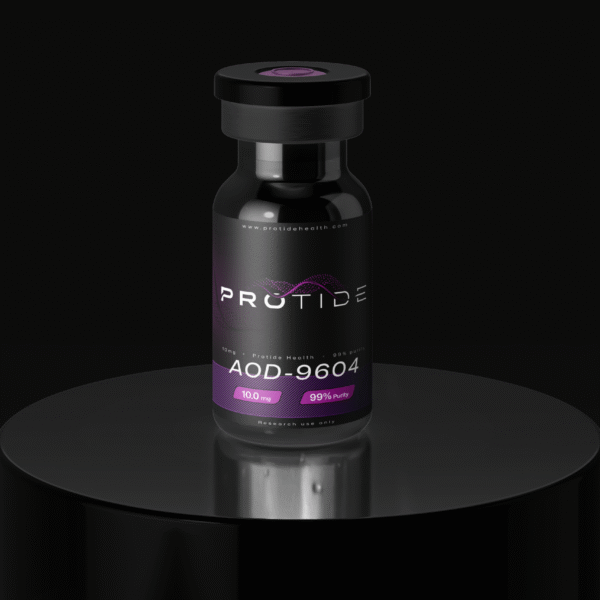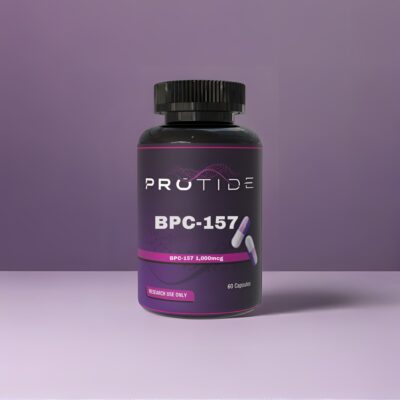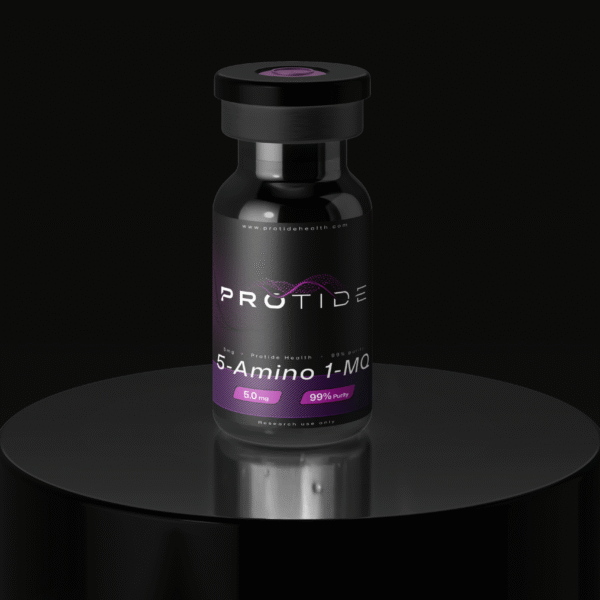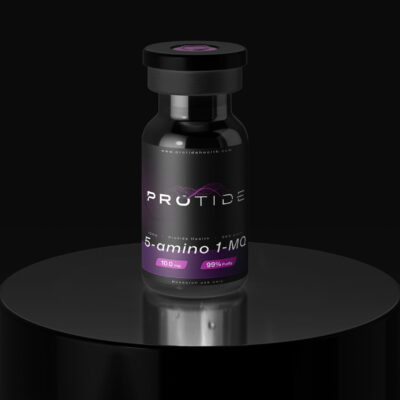5-Amino 1-MQ 10mg
$75.00
5-amino 1-MQ is a small-molecule inhibitor of nicotinamide N-methyltransferase (NNMT) Reduced adiposity, smaller adipocytes, and lower cholesterol without suppressing food intake. Recent work also reports improved muscle strength and regenerative capacity.
In stock
Free shipping on orders over $99!
- 99% Purity
- Third-Party Tested
- Secure Payments
- Free BAC Water
- Satisfaction Guaranteed
5-Amino-1MQ: Metabolism, and Muscle-Function Research
Overview Summary
5-Amino-1-methylquinolinium (5-amino-1MQ) is a small-molecule inhibitor of nicotinamide N-methyltransferase (NNMT)—an enzyme that consumes methyl groups from S-adenosyl-methionine (SAM) to convert nicotinamide (NAM) into 1-methylnicotinamide (1-MNA). In cell and rodent models, NNMT inhibition preserves intracellular NAM and SAM, increases NAD⁺ availability, and shifts lipid metabolism, translating into reduced adiposity, smaller adipocytes, and lower cholesterol without suppressing food intake. Recent work also reports improved muscle strength and regenerative capacity in aged mice treated with NNMT inhibitors. PubMed+2PubMed+2
Molecular Identity & Rationale
-
Compound: 5-amino-1-methylquinolinium (commonly “5-amino-1MQ”).
-
Class: Membrane-permeable, selective NNMT inhibitor.
-
Rationale: By blocking NNMT, 5-amino-1MQ decreases formation of 1-MNA and preserves NAM for the NAD⁺ salvage pathway while conserving SAM for methylation reactions—mechanistic changes linked to anti-adipogenic effects and metabolic remodeling in preclinical studies. PubMed
Mechanistic Overview (Research Context)
-
NAD⁺ & methylation economy: NNMT consumes SAM and NAM, lowering the cell’s methylation potential and diverting NAM away from NAD⁺ synthesis. Inhibiting NNMT with 5-amino-1MQ raises intracellular NAD⁺ and SAM, reduces SAH/SAM constraints, and suppresses lipogenesis in adipocytes. PubMed
-
Epigenetic remodeling: Elevated NNMT activity creates a “methylation sink,” globally altering chromatin marks and gene expression; conversely, NNMT suppression restores methylation potential—an axis with implications across metabolism and oncology. PMC
-
Target validity: NNMT knockdown in mice protects against diet-induced obesity and improves metabolic parameters, supporting the enzyme as a lever for energy balance. PubMed
What Research Is Exploring as Potential Benefits—and What That Could Mean for an Individual (Research-Only)
Plain-language interpretation of endpoints commonly evaluated in controlled studies. Not usage guidance.
-
Reduced body fat and adipocyte size: In diet-induced obesity (DIO) mice, systemic NNMT inhibition with 5-amino-1MQ reduced body weight, white adipose mass, and adipocyte size, and lowered plasma cholesterol, without changing food intake. For an individual participating in a study, that reads out as smaller fat depots on imaging, improved lipid panels, and no anorectic effect observed in these models. PubMed
-
NAD⁺ and metabolic flexibility: Adipocyte studies show higher intracellular NAD⁺ and SAM after 5-amino-1MQ exposure—biochemical shifts often associated with enhanced oxidative metabolism and lower lipogenesis in vitro, which—if mirrored in vivo—could map to better metabolic markers (exploratory). PubMed
-
Liver fat & systems outcomes (adjunct with diet): Combining an NNMT inhibitor with a lean/low-fat diet normalized body weight and adiposity in obese mice more fully than diet alone and established a distinct, “lean-like” microbiome profile—suggesting potential adjacency to lifestyle interventions under controlled conditions. Nature
-
Muscle strength and regeneration (aging models): In aged mice, NNMT inhibition improved grip strength and boosted muscle stem-cell activation/regeneration, with effects that mimicked or exceeded resistance/endurance training and combined additively with exercise. For a participant, that corresponds to higher functional strength scores and enhanced recovery metrics in a monitored protocol. PubMed
Evidence Snapshot (What’s Known vs. Unknown)
Known
-
Pharmacology & selectivity: 5-amino-1MQ inhibits NNMT in adipocytes, lowers 1-MNA, raises NAD⁺ and SAM, and does not inhibit related methyltransferases nor primary NAD⁺-salvage enzymes (NAMPT/SIRT1) at tested ranges. PubMed
-
Efficacy in rodents: Treating DIO mice with 5-amino-1MQ reduces weight and adiposity and improves lipids; NNMT knockdown models independently corroborate anti-obesity phenotypes. PubMed+1
-
Adjunctive signals with diet & exercise: NNMT inhibition synergizes with a lean diet to restore adiposity and modifies the microbiome; improves muscle function in aged mice, with additive effects to exercise. NaturePubMed
Unknown
-
Human efficacy & dose: No randomized, controlled human trials of 5-amino-1MQ have been published; dose–response, durability, and long-term safety remain to be defined.
-
Population generalizability: Effects across sex, age, comorbidities, and interactions with NAD⁺ precursors or methyl-donor regimens are not established.
-
Off-target/epigenetic risks: While rescuing methylation potential can be beneficial, system-wide epigenetic effects warrant careful profiling. PMC
Study Design Considerations (for Investigators)
-
Populations:
-
Metabolic: Adults with visceral adiposity, dyslipidemia, or prediabetes (mechanistic cohorts).
-
Geroscience: Older adults with declining muscle function (exploratory).
-
-
Core endpoints:
-
Body composition: DXA/CT fat distribution; adipocyte histomorphometry (preclinical).
-
Biochemistry: NAD⁺, NAM, 1-MNA, SAM/SAH, lipid panels, glucose/insulin indices.
-
Function: Grip strength, gait speed, isokinetic knee torque; muscle stem-cell activity (preclinical).
-
Systems biology: Microbiome profiles and metabolomics to track network-level responses. PubMed+1Nature
-
-
Controls & comparators: Vehicle; diet only; exercise only; NNMT inhibitor + lifestyle to quantify additivity/synergy.
-
Exposure & PK/PD: Rodent studies used systemic administration (e.g., 20 mg/kg t.i.d. in mice); translation requires allometric scaling, human PK, and exposure–response modeling before ethical trials. PubMed
Safety, Tolerability & Practical Expectations (Research Context)
-
Rodent observations: In DIO mice, 5-amino-1MQ lowered adiposity and cholesterol without reducing food intake and without overt adverse effects reported in the study period. PubMed
-
Human data gap: There are no published clinical safety datasets specific to 5-amino-1MQ. Given NNMT’s role at the intersection of NAD⁺ metabolism and methylation, human protocols should include hepatic panels, methylation markers (SAM/SAH), lipid/glucose indices, and off-target/epigenetic assessments. Frontiers
-
Magnitude & timeline: In models where NNMT is inhibited, adiposity and functional changes accrue over weeks; adjunct diet/exercise may enhance effects. Human magnitude and durability remain unknown. NaturePubMed
Limitations & Open Questions
-
Translational biology: Will adipocyte NAD⁺/SAM shifts seen in vitro reproduce in human white and brown fat and liver at tolerable exposures? PubMed
-
Epigenetic breadth: To what extent does restoring methylation potential re-pattern chromatin in target vs. off-target tissues? PMC
-
Comparative strategies: How does NNMT inhibition compare—or combine—with NAD⁺ precursors or exercise across endpoints like VAT, hepatic fat, and muscle function? PubMed
Conclusion
5-amino-1MQ offers a mechanistically coherent approach to modulating NAD⁺ metabolism, methylation balance, and lipid storage via selective NNMT inhibition. Across preclinical systems, it reduces adiposity, improves lipid profiles, raises NAD⁺/SAM, and enhances muscle function in aged mice—especially when paired with lifestyle interventions. The next essential step is well-controlled human pharmacology to establish exposure, safety, and efficacy relative to diet and exercise alone. PubMed+1Nature
Key Citations (medical/research sources)
-
Small-molecule NNMT inhibition with 5-amino-1MQ (cells & DIO mice): Neelakantan H, et al. Biochem Pharmacol. 2018;147:141-152. Free full text. PubMed
-
Target validity (genetic): Kraus D, et al. Nature. 2014;508:258-262. NNMT knockdown protects against diet-induced obesity. PubMed
-
Mechanism—methylation sink & epigenetics: Ulanovskaya OA, et al. Nat Chem Biol. 2013;9(5):300-306. PMC
-
Review—NNMT in obesity & T2D (includes 5-amino-1MQ context): Liu JR, et al. Biomed Res Int. 2021:9924314. PMC
-
Review—NNMT as a pharmacological target: Sun WD, et al. Front Pharmacol. 2024;15:1410479. PMC
-
Diet adjacency & microbiome with NNMTi (5-amino-1MQ): Dimet-Wiley A, et al. Sci Rep. 2022;12:484. Nature
-
Muscle function & regeneration in aged mice with NNMTi: Dimet-Wiley A, et al. Sci Rep. 2024;14:15554. PubMed
Legal Disclaimer
This article is for research and educational purposes only. 5-amino-1MQ is not approved by the U.S. Food and Drug Administration (FDA) or other regulatory authorities for diagnosis, treatment, cure, or prevention of any disease. Any investigation should occur exclusively within controlled research settings and in compliance with applicable laws, ethics oversight, and good clinical/laboratory practice.
| Weight | 1 lbs |
|---|---|
| Dimensions | 1 × 1 × 1 in |
Refer friends. Earn together
Invite your friends and earn a discount on your next purchase. Your friend also earns a discount! Get started now, by sharing your referral link with your friends.
Refer friends. Earn together
Invite your friends and earn a discount on your next purchase. Your friend also earns a discount! Get started now, by sharing your referral link with your friends.

